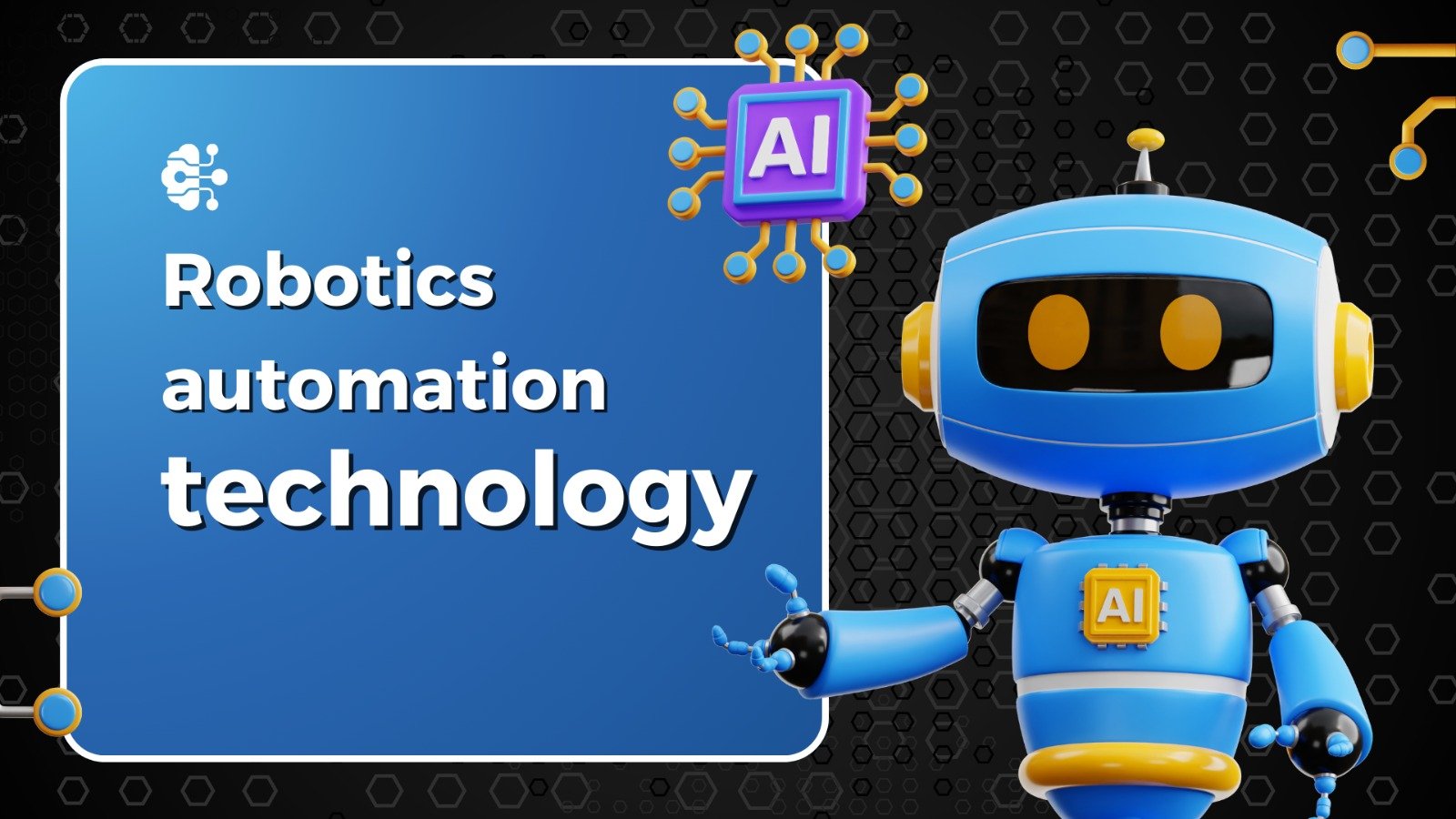Robotics Automation Technology
Robotics automation technology addresses a weighty progression that is reshaping industries around the world. From manufacturing and medical services to agribusiness and then some, robots are changing how we work and live. In this investigation, we’ll dive into the complexities of Robotics automation technology, revealing insight into its applications, advantages, and effects on society.
#1. Understanding Robotics Automation:
At its center, robotics automation includes the utilization of robots to perform errands independently or semi-independently, frequently as a team with people. These robots are furnished with sensors, actuators, and intelligent algorithms that empower them to see their current circumstance, simply decide, and execute activities with accuracy and productivity.
#2. Applications Across Industries:
The applications of robotics automation technology range a different exhibit of industries, each profiting from the capacities of robots in novel ways:
1. Manufacturing:
In the manufacturing area, robots smooth out creation processes, performing monotonous errands with speed and exactness. From sequential construction systems to distribution centers, robots handle undertakings like welding, painting, and bundling, accordingly expanding efficiency and decreasing work costs.
2. Healthcare:
In healthcare, robots assume an imperative part in helping clinical experts and upgrading patient consideration. Surgical robots empower insignificantly obtrusive systems with more prominent accuracy, prompting quicker recuperation times and working on careful results. Moreover, administration robots help with errands like patient checking, drug conveyance, and senior consideration, facilitating the weight on healthcare laborers and working on personal satisfaction for patients.
3. Agriculture:
In agriculture, robots mechanize work concentrated undertakings like planting, gathering, and harvest observing. Independent robots outfitted with cameras and sensors overview fields, furnishing ranchers with important bits of knowledge into crop wellbeing and ecological circumstances. Automated reapers smooth out the gathering system, diminishing dependence on physical work and expanding productivity.
4. Logistics and Warehousing:
In logistics and warehousing, robots enhance stock administration and request satisfaction tasks. Independent versatile robots explore distribution centers, recovering things and conveying them to assigned areas with speed and accuracy. This automation smoothes out the store network, lessening mistakes and upgrading general proficiency.
#3. Benefits of Robotics Automation:
The adoption of robotics automation technology offers various benefits across industries:
Increased Efficiency: Robots can perform errands continuously without exhaustion, prompting higher production rates and quicker completion times.
1. Further developed Well-being:
By handling dangerous or exhausting assignments, robots diminish the gamble of workplace wounds and further develop general security conditions for workers.
2. Cost Savings:
While the underlying interest in robotics automation technology might be huge, the long-term savings in labor costs and increased efficiency offset the upfront costs.
3. Improved Quality:
With exact control and consistency, robots guarantee item quality and diminish abandons, bringing about higher consumer loyalty.
#4. Impact on Employment and Workforce:
While robotics automation technology brings irrefutable benefits, it additionally raises concerns about its impact on employment and the workforce:
1. Job Displacement:
Automation might prompt the displacement of specific jobs, especially those that include tedious or routine errands. Notwithstanding, it additionally sets out new open doors for gifted workers to work, keep up with, and program robots.
2. Reskilling and Training:
To adjust to the changing work market, workers might have to secure new abilities and go through training in robotics technology and related fields. Bosses and educational institutions play a critical part in working with this transition through vocational projects and workforce improvement drives.
3. Collaborative Work Environments:
Instead of supplanting people completely, robotics automation technology frequently supplements human work, establishing collaborative work environments where people and robots work with one next to the other. This cooperative relationship uses the qualities of the two players, bringing about increased efficiency and innovation.
#5. Ethical and Social Considerations:
As robotics automation keeps on propelling, it raises significant ethical and social considerations:
1. Ethical Use of AI:
The coordination of man-made reasoning (AI) into robotics raises inquiries concerning ethical independent direction and responsibility. It’s fundamental to guarantee that AI-controlled robots comply with ethical standards and human qualities, especially in delicate domains like healthcare and policing.
2. Job Polarization:
Automation might intensify pay imbalance by polarizing the work market into high-gifted, lucrative jobs and low-talented, low-paying jobs. Addressing this difference requires proactive measures to help laborers through reskilling drives and social security nets.
3. Privacy and Data Security:
With the expansion of robotics and AI, worries about privacy and data security become vital. It’s pivotal to execute vigorous shields to safeguard delicate data and relieve the gamble of data breaks or misuse.
Also Read Artificial Intelligence vs. Machine Learning
Conclusion:
In conclusion, robotics automation technology addresses an extraordinary power that holds the possibility to upset industries, upgrade efficiency, and work on personal satisfaction. While its reception presents difficulties and uncertainties, proactive measures can moderate dangers and guarantee that robotics automation benefits society overall. By embracing development dependably and ethically, we can tackle the maximum capacity of robotics automation to construct a more splendid and prosperous future.

